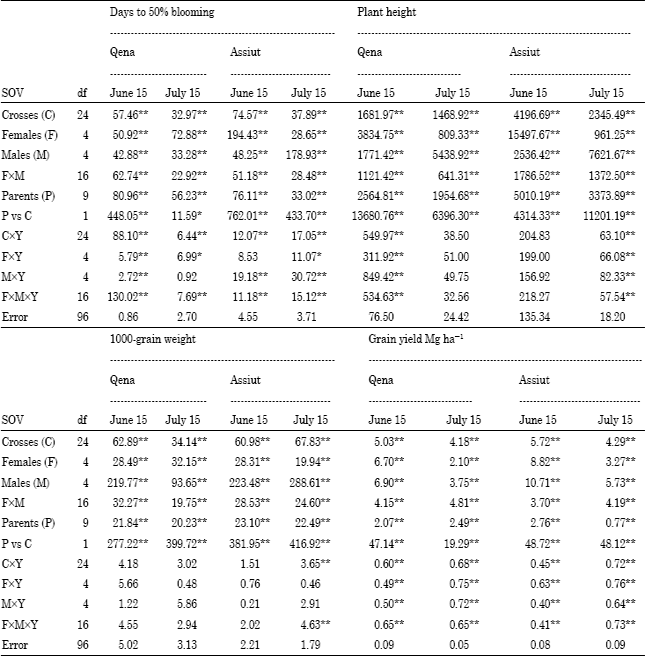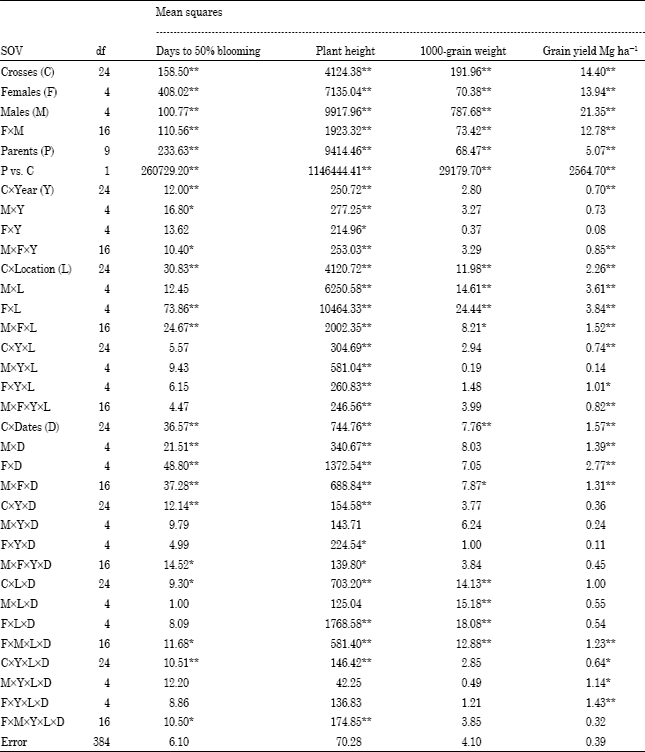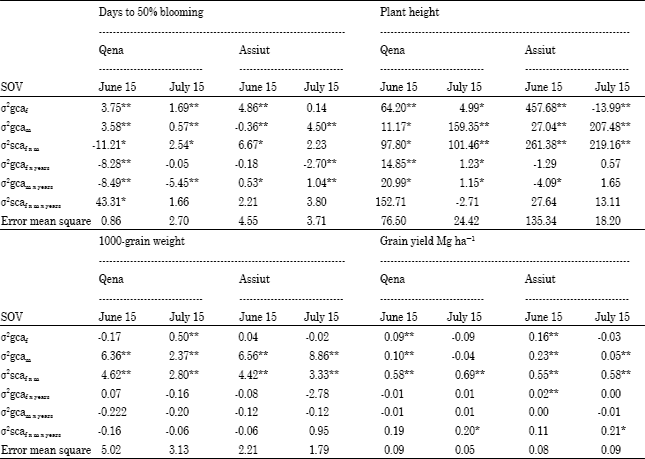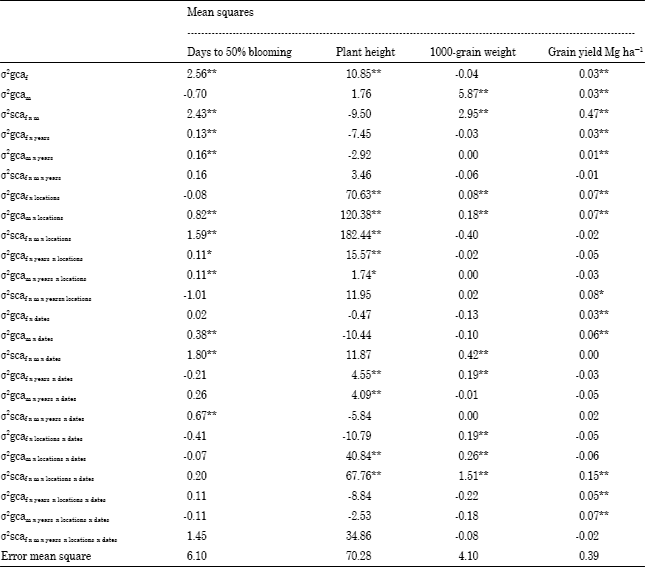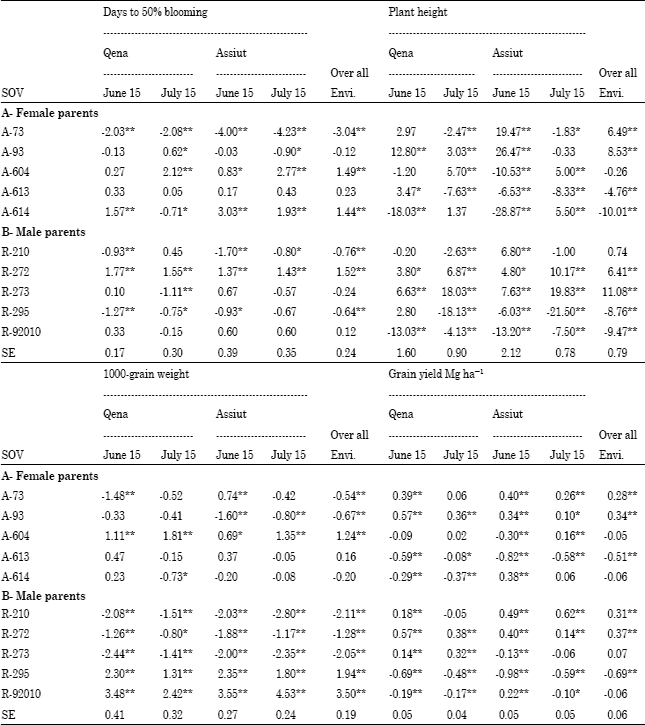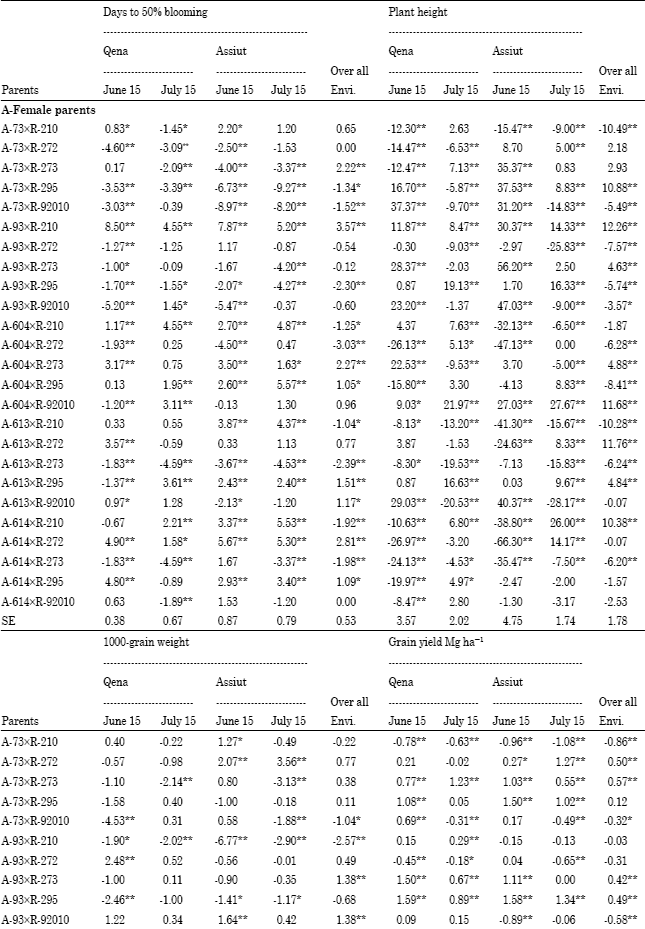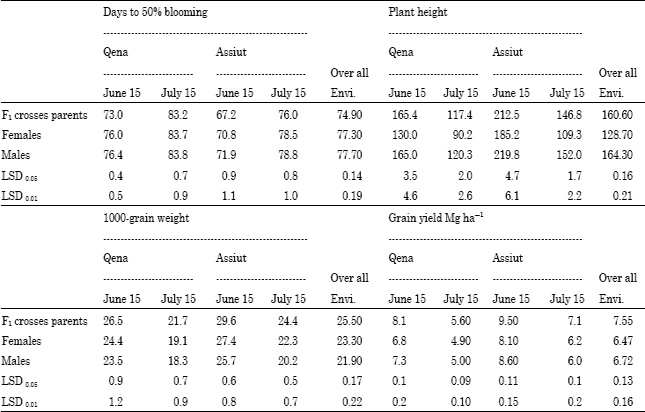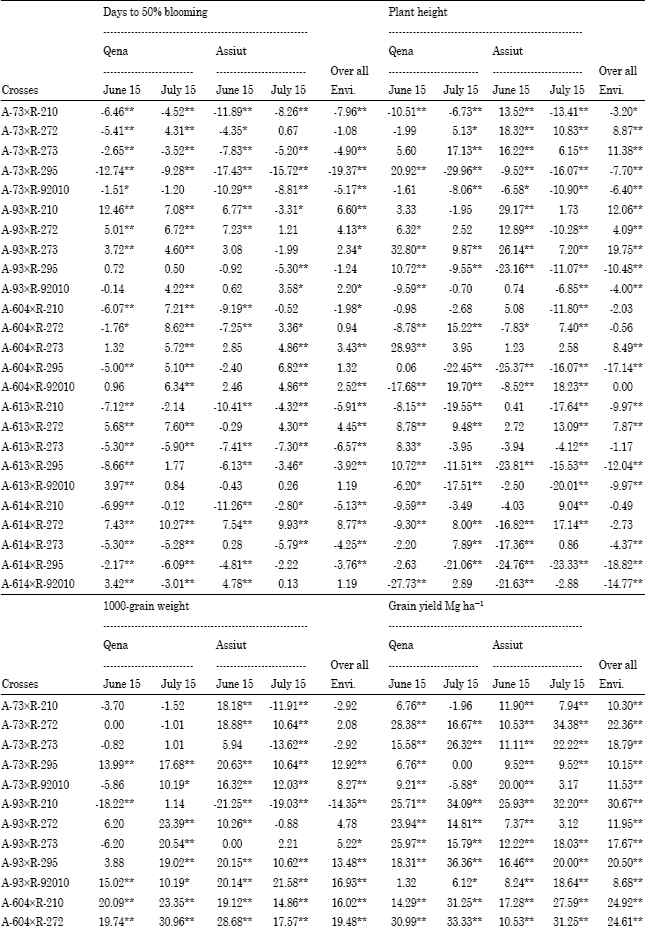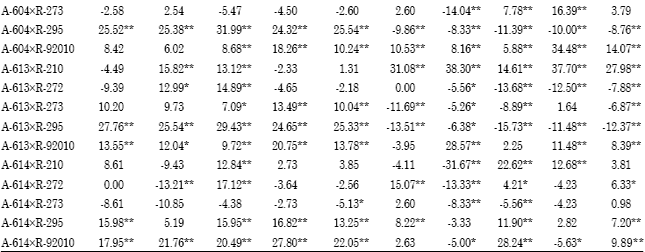Research Article
The Effect of Environment on Combining Ability and Heterosis in Grain Sorghum (Sorghum bicolor L. Moench)
Department of Agronomy, Faculty of Agriculture, Assiut University, Assiut, Egypt
M. A. Ali
Department of Agronomy, Faculty of Agriculture, South Valley University, Qena, Egypt
A. M. Mahmoud
Department of Agronomy, Faculty of Agriculture, Assiut University, Assiut, Egypt









